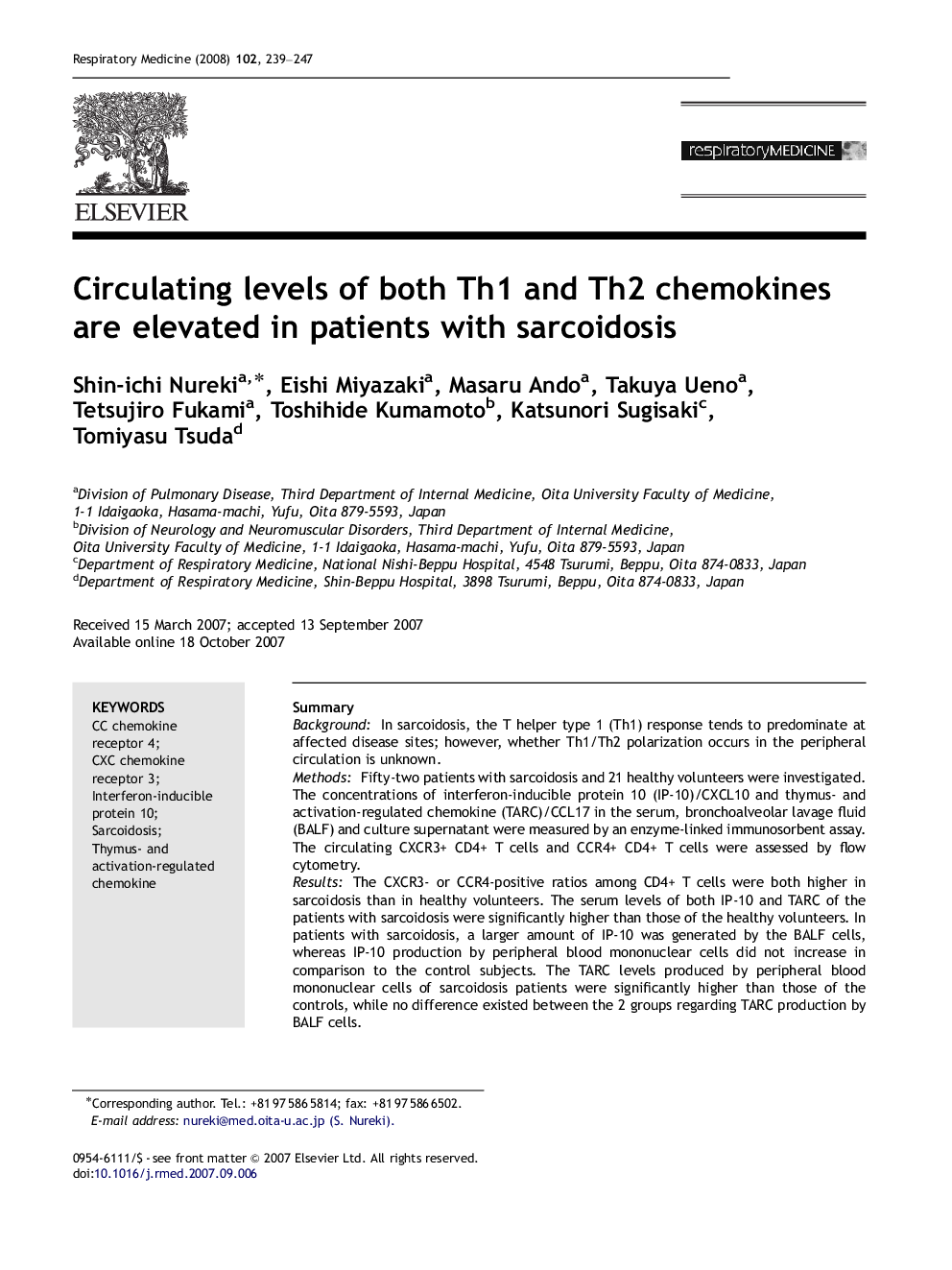| Article ID | Journal | Published Year | Pages | File Type |
|---|---|---|---|---|
| 4212425 | Respiratory Medicine | 2008 | 9 Pages |
SummaryBackgroundIn sarcoidosis, the T helper type 1 (Th1) response tends to predominate at affected disease sites; however, whether Th1/Th2 polarization occurs in the peripheral circulation is unknown.MethodsFifty-two patients with sarcoidosis and 21 healthy volunteers were investigated. The concentrations of interferon-inducible protein 10 (IP-10)/CXCL10 and thymus- and activation-regulated chemokine (TARC)/CCL17 in the serum, bronchoalveolar lavage fluid (BALF) and culture supernatant were measured by an enzyme-linked immunosorbent assay. The circulating CXCR3+ CD4+ T cells and CCR4+ CD4+ T cells were assessed by flow cytometry.ResultsThe CXCR3- or CCR4-positive ratios among CD4+ T cells were both higher in sarcoidosis than in healthy volunteers. The serum levels of both IP-10 and TARC of the patients with sarcoidosis were significantly higher than those of the healthy volunteers. In patients with sarcoidosis, a larger amount of IP-10 was generated by the BALF cells, whereas IP-10 production by peripheral blood mononuclear cells did not increase in comparison to the control subjects. The TARC levels produced by peripheral blood mononuclear cells of sarcoidosis patients were significantly higher than those of the controls, while no difference existed between the 2 groups regarding TARC production by BALF cells.ConclusionIP-10 is mainly produced at the lung and TARC in the peripheral circulation in sarcoidosis patients. Both IP-10 and TARC cooperatively play a role in the pathogenesis of sarcoidosis.
